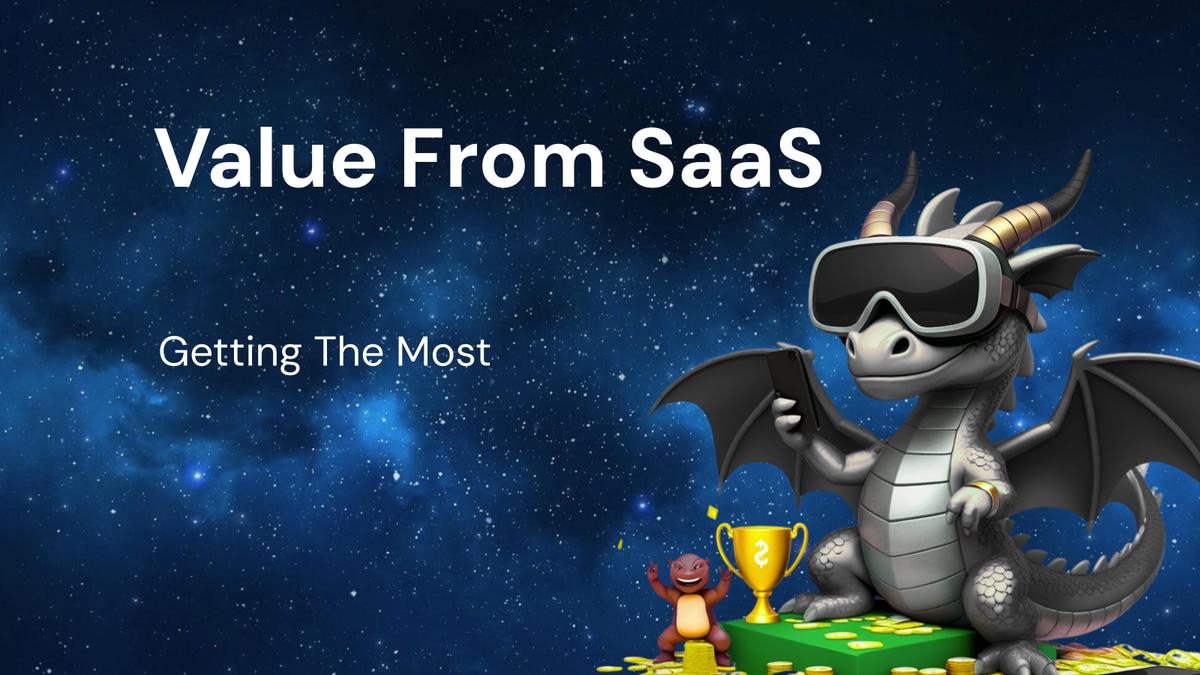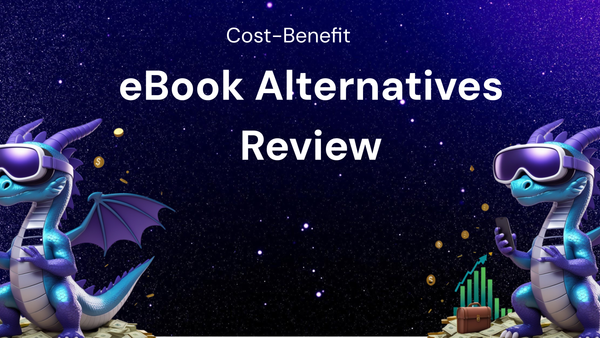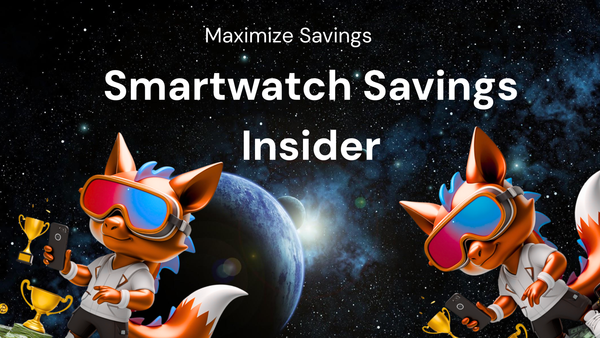Your Guide to Getting Value for Money from SaaS

Your Guide to Getting Value for Money from SaaS
Software as a Service (SaaS) has revolutionized the way businesses operate, offering scalable, accessible, and often cost-effective solutions. However, the subscription-based model, while initially attractive, can quickly lead to "SaaS sprawl" and wasted budget if not managed strategically. Many organizations find themselves paying for features they don't use, licenses sitting dormant, or simply choosing the wrong tools from the outset.
This comprehensive guide provides you with the knowledge and strategies you need to maximize your ROI and truly get value for your money from your SaaS investments. We'll delve into everything from initial planning and vendor selection to ongoing optimization and usage monitoring, ensuring you're not just subscribing, but profiting from SaaS.
I. Understanding the SaaS Value Proposition:
Before diving into specific strategies, let's revisit why SaaS is appealing in the first place. Recognizing these core benefits helps you evaluate whether a SaaS solution is truly the right choice for your needs and how to measure its success:
- Reduced Upfront Costs: SaaS eliminates the large capital expenditure associated with traditional software licenses. Instead, you pay a recurring subscription fee, freeing up resources for other critical business areas.
- Scalability and Flexibility: SaaS solutions easily scale to accommodate your growing business needs. You can adjust your subscription based on usage, adding or removing licenses as required. This flexibility prevents overspending on unused capacity.
- Accessibility and Convenience: SaaS applications are accessible from anywhere with an internet connection, fostering collaboration and enabling remote work. This convenience eliminates the need for complex on-premise infrastructure and IT support.
- Automatic Updates and Maintenance: The vendor handles all software updates, maintenance, and security patches, reducing the burden on your internal IT team and ensuring you always have the latest features and security enhancements.
- Focus on Core Business: By outsourcing software management to the vendor, your team can focus on core business activities, driving innovation and improving productivity.
II. Planning and Preparation: Setting the Stage for SaaS Success:
Getting the most value from SaaS starts long before you sign a contract. Careful planning and preparation are crucial for making informed decisions and avoiding costly mistakes.
- 1. Define Your Needs and Objectives:
- Identify the problem: Clearly articulate the specific business challenge you're trying to solve with a SaaS solution. What are the pain points, inefficiencies, or gaps in your current processes?
- Set measurable goals: Define what success looks like. What specific metrics will you use to track the effectiveness of the SaaS solution? Examples include increased efficiency, reduced costs, improved customer satisfaction, or enhanced collaboration.
- Document requirements: Create a detailed list of your functional and non-functional requirements. Functional requirements describe the specific features and capabilities the software must have. Non-functional requirements address aspects like security, performance, integration, and usability.
- 2. Budgeting and Cost Analysis:
- Determine your budget: Establish a realistic budget for the SaaS solution, considering both initial implementation costs and ongoing subscription fees.
- Calculate total cost of ownership (TCO): Don't just focus on the subscription price. Factor in other costs such as implementation, training, data migration, integration, and potential downtime.
- Compare different pricing models: SaaS vendors offer various pricing models, including per-user, per-feature, usage-based, and tiered pricing. Understand the nuances of each model and choose the one that best aligns with your needs and usage patterns.
- 3. Research and Vendor Selection:
- Identify potential vendors: Research SaaS vendors that offer solutions that meet your requirements. Use online resources, industry reports, and peer reviews to identify reputable vendors with a proven track record.
- Request demos and trials: Take advantage of free demos and trials to evaluate the software firsthand. Involve key stakeholders in the evaluation process to gather feedback from different perspectives.
- Check references and read reviews: Contact existing customers of the vendor to get their honest feedback on the software and the vendor's support. Read online reviews on platforms like G2 Crowd, Capterra, and TrustRadius to get a broader perspective.
- Assess security and compliance: Ensure the vendor has robust security measures in place to protect your data. Verify that they comply with relevant industry regulations and data privacy standards (e.g., GDPR, HIPAA).
- 4. Integration Strategy:
- Identify integration needs: Determine how the SaaS solution will integrate with your existing systems, such as CRM, ERP, and accounting software.
- Assess integration capabilities: Evaluate the vendor's integration capabilities and the availability of APIs or pre-built integrations.
- Plan for data migration: Develop a plan for migrating your data to the SaaS solution, ensuring data integrity and minimizing downtime.
III. Negotiation and Contract Management: Securing the Best Deal:
Once you've identified your preferred vendor, it's time to negotiate the contract and secure the best possible terms. Don't be afraid to negotiate – SaaS contracts are often negotiable.
- 1. Negotiate Pricing and Payment Terms:
- Compare quotes from multiple vendors: Use competitive quotes to negotiate a lower price or better payment terms.
- Negotiate volume discounts: If you're purchasing a large number of licenses, negotiate a volume discount.
- Consider annual commitments: Committing to an annual subscription can often result in a lower monthly rate.
- Negotiate payment terms: Negotiate flexible payment terms that align with your cash flow.
- 2. Review the Service Level Agreement (SLA):
- Understand the SLA: Carefully review the SLA to understand the vendor's commitments regarding uptime, performance, and support.
- Negotiate SLA terms: Negotiate SLA terms that meet your specific needs and expectations. For example, you may want to negotiate penalties for downtime or slow response times.
- 3. Data Ownership and Security:
- Clarify data ownership: Ensure the contract clearly defines your ownership of the data stored in the SaaS solution.
- Review security provisions: Carefully review the security provisions of the contract to ensure the vendor is taking adequate measures to protect your data.
- Address data privacy: Ensure the contract complies with relevant data privacy regulations (e.g., GDPR, CCPA).
- 4. Termination and Renewal:
- Understand termination clauses: Carefully review the termination clauses of the contract, including the notice period required for termination and any penalties for early termination.
- Negotiate renewal terms: Negotiate renewal terms that are favorable to your business. For example, you may want to negotiate a fixed price for the renewal period or the right to terminate the contract if the vendor increases prices.
- 5. Legal Review:
- Involve legal counsel: Have your legal counsel review the contract before signing it to ensure it protects your interests and complies with applicable laws.
IV. Implementation and Onboarding: Setting Up for User Adoption and Value Realization:
A smooth implementation and effective onboarding process are essential for driving user adoption and realizing the full value of your SaaS investment.
- 1. Project Management:
- Assign a project manager: Appoint a project manager to oversee the implementation process and ensure it stays on track.
- Develop a project plan: Create a detailed project plan that outlines the tasks, timelines, and resources required for implementation.
- Communicate effectively: Maintain open communication with the vendor and your internal stakeholders throughout the implementation process.
- 2. Data Migration:
- Plan the data migration: Develop a detailed plan for migrating your data to the SaaS solution, including data cleansing, transformation, and validation.
- Ensure data integrity: Take steps to ensure the integrity of your data during the migration process.
- Minimize downtime: Minimize downtime during the data migration process by using appropriate tools and techniques.
- 3. User Training and Onboarding:
- Provide comprehensive training: Provide comprehensive training to your users on how to use the SaaS solution.
- Develop onboarding materials: Create onboarding materials, such as user guides, FAQs, and video tutorials, to help users get started quickly.
- Offer ongoing support: Provide ongoing support to your users to address any questions or issues they may encounter.
- 4. Change Management:
- Communicate the benefits: Clearly communicate the benefits of the SaaS solution to your users to encourage adoption.
- Address concerns: Address any concerns or resistance to change from your users.
- Provide support and encouragement: Provide support and encouragement to your users as they adapt to the new software.
V. Monitoring and Optimization: Maximizing ROI Over the Long Term:
The journey doesn't end after implementation. Continuous monitoring and optimization are crucial for maximizing your ROI and ensuring you're getting the most value from your SaaS investments.
- 1. Track Key Metrics:
- Usage metrics: Track key usage metrics, such as the number of active users, feature usage, and average session time, to understand how the software is being used.
- Performance metrics: Monitor performance metrics, such as uptime, response time, and error rates, to ensure the software is performing as expected.
- Business outcomes: Track the business outcomes you defined in the planning stage to measure the effectiveness of the SaaS solution.
- 2. Analyze Usage Patterns:
- Identify underutilized features: Identify features that are not being used and explore ways to increase their adoption.
- Identify unused licenses: Identify unused licenses and reassign them to other users or reduce your subscription.
- Optimize workflows: Analyze user workflows to identify opportunities to improve efficiency and productivity.
- 3. Regularly Review Subscriptions:
- Assess subscription needs: Regularly assess your subscription needs based on your usage patterns and business requirements.
- Adjust subscription tiers: Adjust your subscription tiers to match your actual usage and avoid paying for features you don't need.
- Consolidate redundant tools: Identify redundant SaaS tools and consolidate them to reduce costs and simplify your technology stack.
- 4. Seek User Feedback:
- Conduct surveys: Conduct regular surveys to gather feedback from your users on their satisfaction with the SaaS solution.
- Hold focus groups: Hold focus groups to gather more in-depth feedback from your users.
- Monitor support tickets: Monitor support tickets to identify common issues and areas for improvement.
- 5. Stay Informed About Vendor Updates:
- Subscribe to vendor newsletters: Subscribe to vendor newsletters to stay informed about new features, updates, and pricing changes.
- Attend vendor webinars: Attend vendor webinars to learn about best practices and new ways to use the software.
- 6. Renegotiate Contracts at Renewal:
- Leverage usage data: Use your usage data to negotiate better pricing and terms at renewal time.
- Explore alternative vendors: Explore alternative vendors to ensure you're getting the best value for your money.
VI. Common SaaS Value Traps to Avoid:
Being aware of common pitfalls can help you proactively avoid them and protect your SaaS investments.
- SaaS Sprawl: The uncontrolled proliferation of SaaS applications across an organization, leading to redundant functionality, increased costs, and security vulnerabilities. Combat this by establishing a centralized process for SaaS procurement and implementing a SaaS management platform.
- Feature Creep: Paying for features you don't need or use. Carefully evaluate your requirements and choose a pricing plan that aligns with your actual usage.
- Lack of User Adoption: Investing in a powerful SaaS solution that goes unused due to inadequate training, poor onboarding, or resistance to change. Prioritize user training and address any concerns to ensure users embrace the new software.
- Poor Integration: Choosing a SaaS solution that doesn't integrate well with your existing systems, leading to data silos, manual data entry, and inefficiencies. Ensure seamless integration by carefully evaluating integration capabilities and using APIs or pre-built integrations.
- Ignoring Security Risks: Failing to adequately assess the security risks associated with a SaaS solution, potentially exposing your data to breaches and compliance violations. Thoroughly vet the vendor's security practices and ensure they comply with relevant industry regulations.
VII. The Future of SaaS Value:
The SaaS landscape is constantly evolving, with new technologies and trends emerging. Staying ahead of the curve will be crucial for maximizing your SaaS value in the future.
- AI-powered SaaS: Artificial intelligence (AI) is increasingly being integrated into SaaS solutions, providing advanced capabilities such as predictive analytics, automation, and personalized experiences.
- Low-code/No-code Platforms: Low-code/no-code platforms are empowering businesses to build custom applications and integrations without requiring extensive coding skills.
- Composable SaaS: The rise of composable SaaS allows businesses to assemble modular SaaS components from different vendors to create customized solutions that perfectly meet their needs.
- SaaS Management Platforms (SMPs): SMPs provide a centralized platform for managing all your SaaS subscriptions, tracking usage, optimizing costs, and ensuring security compliance. These platforms are becoming increasingly essential for organizations with complex SaaS ecosystems.
Conclusion:
Getting value for money from SaaS requires a strategic and proactive approach. By carefully planning your SaaS investments, negotiating favorable contracts, implementing effective onboarding programs, and continuously monitoring and optimizing your usage, you can unlock the full potential of SaaS and drive significant business benefits. Remember to avoid common value traps, stay informed about emerging trends, and regularly evaluate your SaaS strategy to ensure you're getting the most value for your money. Embracing these strategies will transform your SaaS subscriptions from a potential cost center into a powerful engine for growth and innovation.




